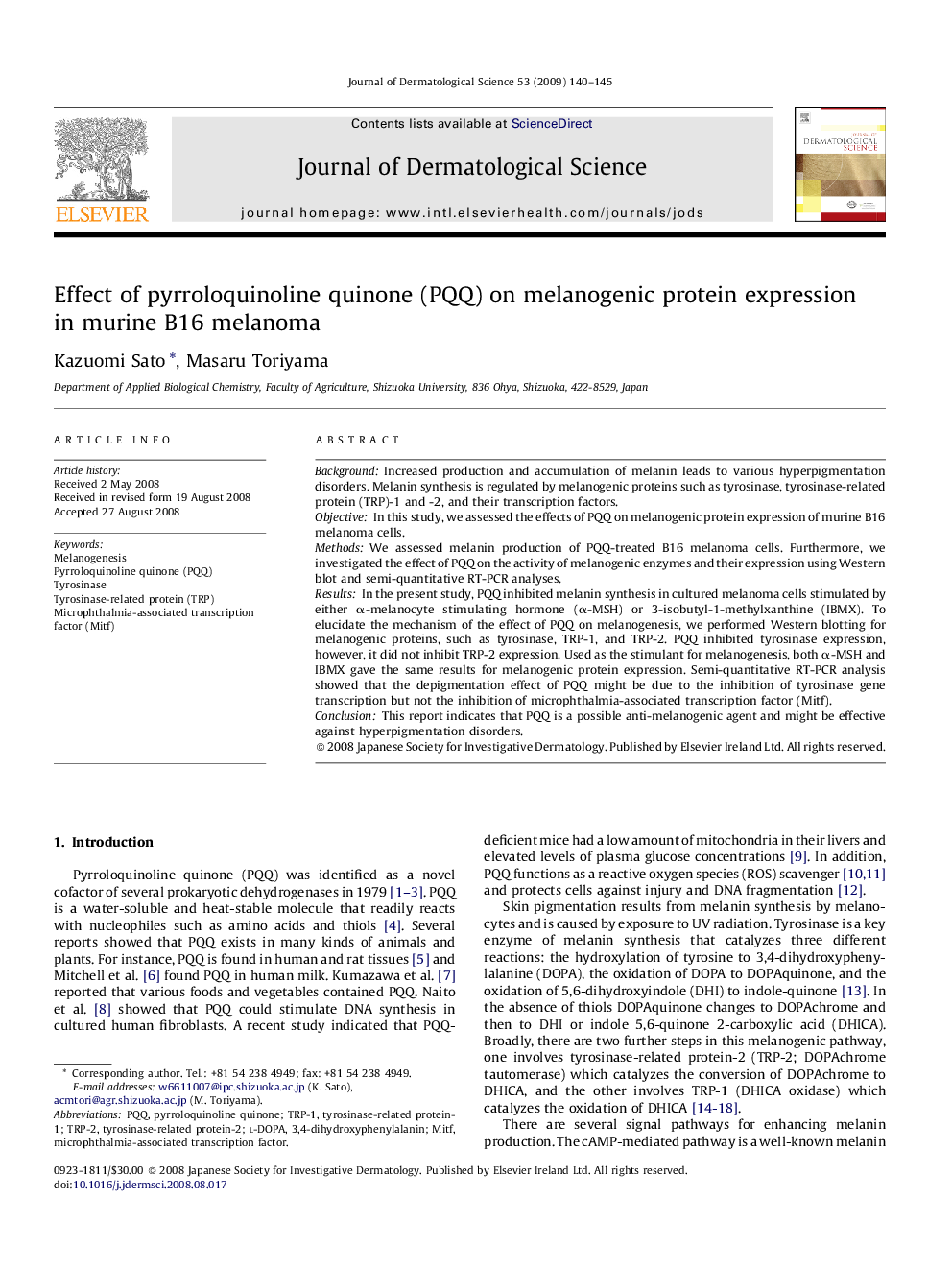| Article ID | Journal | Published Year | Pages | File Type |
|---|---|---|---|---|
| 3213824 | Journal of Dermatological Science | 2009 | 6 Pages |
BackgroundIncreased production and accumulation of melanin leads to various hyperpigmentation disorders. Melanin synthesis is regulated by melanogenic proteins such as tyrosinase, tyrosinase-related protein (TRP)-1 and -2, and their transcription factors.ObjectiveIn this study, we assessed the effects of PQQ on melanogenic protein expression of murine B16 melanoma cells.MethodsWe assessed melanin production of PQQ-treated B16 melanoma cells. Furthermore, we investigated the effect of PQQ on the activity of melanogenic enzymes and their expression using Western blot and semi-quantitative RT-PCR analyses.ResultsIn the present study, PQQ inhibited melanin synthesis in cultured melanoma cells stimulated by either α-melanocyte stimulating hormone (α-MSH) or 3-isobutyl-1-methylxanthine (IBMX). To elucidate the mechanism of the effect of PQQ on melanogenesis, we performed Western blotting for melanogenic proteins, such as tyrosinase, TRP-1, and TRP-2. PQQ inhibited tyrosinase expression, however, it did not inhibit TRP-2 expression. Used as the stimulant for melanogenesis, both α-MSH and IBMX gave the same results for melanogenic protein expression. Semi-quantitative RT-PCR analysis showed that the depigmentation effect of PQQ might be due to the inhibition of tyrosinase gene transcription but not the inhibition of microphthalmia-associated transcription factor (Mitf).ConclusionThis report indicates that PQQ is a possible anti-melanogenic agent and might be effective against hyperpigmentation disorders.
